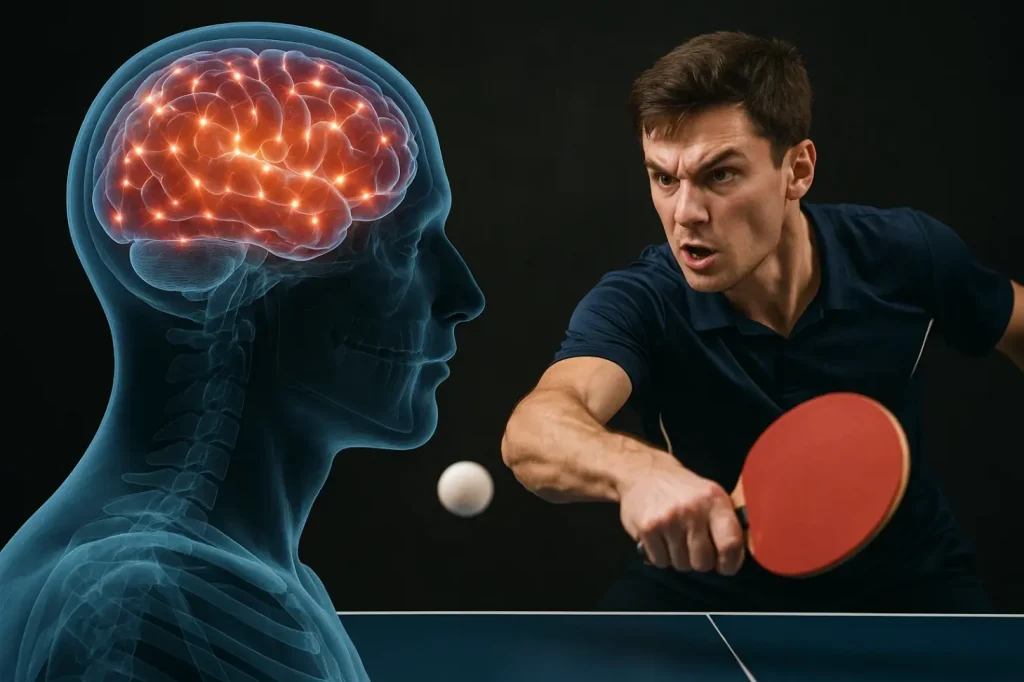Speed, Memory, and Reaction: How the Brain Powers Success in Sports
Athletes often credit their training, discipline, and physical conditioning for their victories, but the brain is the true orchestrator behind every split-second decision, movement, and reaction on the field. Beyond muscle strength and agility, neurological functions such as processing speed, working memory, and reaction timing determine who gains the competitive edge. This complex interplay of mental faculties shapes the way athletes anticipate plays, adapt strategies, and execute with precision under pressure. Understanding how the brain fuels peak performance not only enhances training techniques but also opens avenues for leveraging neuroscience to optimize athletic outcomes.
The Role of Cognitive Speed in Competitive Sports
Cognitive speed—often referred to as mental processing speed—dictates how quickly an athlete can perceive, analyze, and respond to dynamic in-game scenarios. In fast-paced environments like basketball, tennis, or esports, milliseconds can define the difference between victory and defeat. The faster the brain processes visual and auditory stimuli, the more effectively athletes can predict opponents’ moves and adjust their own positioning. Advanced drills, such as rapid decision-making exercises, visual tracking tools, and neurofeedback systems, are now integral in elite training programs to boost mental quickness. Sports scientists increasingly focus on developing exercises that enhance neural connectivity, ensuring athletes translate stimuli into decisive actions without cognitive bottlenecks.
Working Memory: The Brain’s Playbook in Motion
Working memory acts as the athlete’s internal playbook, allowing real-time retention and manipulation of critical information during high-pressure moments. Whether recalling a team’s tactical structure, tracking multiple moving opponents, or adjusting to an evolving game plan, athletes rely on robust working memory to maintain fluidity in their performance. Sports like soccer or hockey demand this skill extensively, as players constantly process new positional data while predicting probable outcomes. Neurotraining methods, such as dual-task exercises combining motor tasks with memory challenges, help athletes expand working memory capacity and sustain accuracy even when fatigued.
Neural Reaction Time: From Stimulus to Action
Reaction time is a cornerstone of performance across virtually all sports, bridging sensory input and physical execution. While reflex speed has a genetic component, neurological training significantly refines it. Athletes undergo drills involving unpredictable stimuli—such as light boards or auditory triggers—to strengthen the brain’s ability to reduce synaptic delay. The neurological chain from perception to motor activation can be optimized, enabling athletes to intercept passes, start sprints, or counter attacks faster than their opponents. Below is a comparative overview illustrating how cognitive attributes align with different sporting contexts:
| Cognitive Attribute | Primary Sports Benefiting | Training Focus |
|---|---|---|
| Processing Speed | Basketball, Esports, Tennis | Visual drills, pattern recognition |
| Working Memory | Soccer, Hockey, American Football | Dual-task exercises, strategy retention |
| Reaction Time | Boxing, Baseball, Table Tennis | Reflex drills, light-based training |
| Predictive Decision-Making | Motorsports, MMA, Volleyball | Anticipation tasks, neurofeedback |
Training the Athletic Brain: Neuroscience-Driven Techniques
Modern training regimens increasingly integrate brain-centric exercises to sharpen neural efficiency. These include cognitive apps that target processing speed, EEG-based neurofeedback sessions that improve focus, and dynamic drills that synchronize physical actions with memory recall. Teams employ reaction lights, strobe glasses, and immersive VR simulations to accelerate adaptation in unpredictable scenarios. For instance, VR scrimmages enable football players to rehearse plays against AI-driven defenses, boosting their situational awareness without physical wear.
One effective approach involves breaking down cognitive conditioning into specific domains:
Speed Processing Drills: Athletes train with multi-object tracking systems to enhance split-second recognition.
Memory Reinforcement Tasks: Coaches design play simulations that require recalling sequences under time constraints.
Reaction Conditioning: Reflex boards with randomized light patterns push athletes to shorten visual-to-motor pathways.
Decision Anticipation Games: Simulations teach players to predict opponent behavior using subtle cues.
These layers of training ensure that athletes can not only move faster but also think faster, maintaining control even as fatigue and pressure mount.
Psychological Resilience and the Brain’s Role in Consistency
Beyond raw speed and accuracy, the brain’s management of stress and emotional control dictates consistency in performance. High-stakes competitions trigger cortisol spikes, which can disrupt decision-making and slow neural processing. Elite athletes engage in mindfulness training, visualization, and controlled breathing to stabilize their mental state, allowing their neural pathways to function at peak efficiency even under intense conditions. Sports psychologists emphasize neuroplasticity—the brain’s ability to adapt—to cultivate calm, confident performance habits, reinforcing neural patterns that counter anxiety-induced lapses. This resilience enables athletes to harness their cognitive strengths without succumbing to the chaos of competition.
Conclusion: Unlocking the Brain’s Full Athletic Potential
Success in sports is no longer defined solely by physical capabilities; it hinges equally on the neurological mechanisms that govern perception, strategy, and execution. By refining processing speed, expanding working memory, and honing reaction time, athletes unlock performance ceilings that once seemed unattainable. As neuroscience and sports science converge, the next generation of champions will be as much products of cognitive mastery as physical skill. Training the brain is no longer an advantage—it is a necessity for those seeking dominance in competitive arenas.




